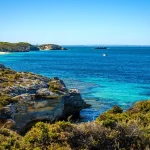
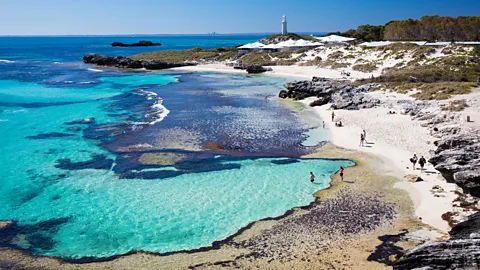
Renowned for its charming quokkas, Rottnest Island has captured the hearts of travelers worldwide. However, beneath the surface lies a rich tapestry of culture, conservation, and community.
During my recent trip to Perth, I shared my plans to visit Rottnest Island with a local resident. Her eyes lit up with nostalgia as she exclaimed, “You’re in for a treat! It’s a place where time seems to stand still, allowing you to unwind and truly enjoy the moment.” Her words resonated with me, even though I was unsure of what to expect.
As I embarked on my journey, I quickly discovered that she was spot on. Rottnest Island, a serene 19-square-kilometer paradise off the coast of Western Australia, indeed possesses a unique charm. The magic began the moment our ferry departed from the mainland, gliding over the azure waters of the Indian Ocean. Nearby, humpback whales danced in the waves, welcoming us with their playful breaches and sprays of mist, while the clear skies hinted at a perfect day ahead.
Just 19 kilometers and a swift 30-minute ferry ride later, I stepped onto the island, instantly transported to a different realm. Since 1931, Rottnest has been a car-free haven, prompting visitors to either bring their bicycles or rent one from the local bike hire shop, known for being the largest in the southern hemisphere.

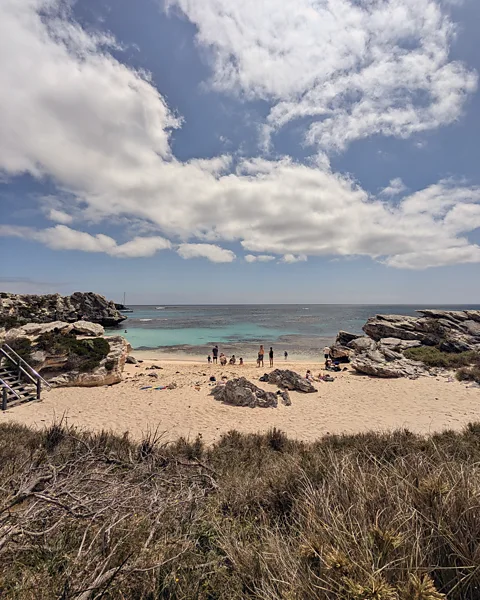
With 63 stunning beaches and 20 picturesque bays to explore, the island is a playground for adventurers. Families and groups of friends filled the paths, some with fishing rods in hand, others with surfboards strapped to their bikes, all eager to indulge in the island’s natural beauty. A quick stop at the local bakery for a flat white and a delicious vanilla slice was a must before setting off to discover the island’s hidden gems, many of which boast evocative names that barely do justice to their breathtaking views.
Eco-Friendly Escapes
In recent years, the concept of eco-friendly travel has gained traction, and Rottnest Island exemplifies this movement. The absence of urban noise and traffic creates an idyllic atmosphere, allowing visitors to immerse themselves in the tranquility of nature.
For generations, Rottnest has been a beloved retreat for Western Australian families. Paul Campbell, a passionate volunteer guide, shared his deep connection to the island, stating, “Rottnest holds a special place in the hearts of locals. We cherish its beauty and are committed to preserving it for future generations.” His words reflect the island’s ethos of conservation and community spirit.
Once a hidden treasure, Rottnest has recently gained fame as one of Australia’s most Instagrammed locations, largely due to its adorable resident, the quokka.

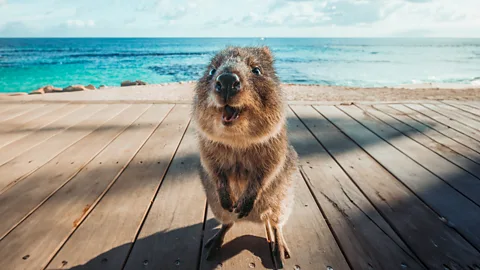
In 2013, the quokka was dubbed “the happiest animal in the world,” and social media quickly embraced this delightful creature. With its endearing smile, the quokka has attracted attention from celebrities and travelers alike, transforming Rottnest into a must-visit destination. The island now welcomes over 800,000 visitors annually, a testament to its newfound popularity.
The Island’s Name and History
Rottnest Island was first discovered by Dutch explorers in the 17th century, with its name originating from a captain who mistook the quokkas for rats. Despite its somewhat misleading name, the island’s beauty captivated him, and he referred to it as “paradise on Earth” in his journal.
As tourism flourished, Rottnest adapted to accommodate the influx of visitors while maintaining its commitment to sustainability. The island has evolved into a model of eco-conscious tourism, ensuring that its natural charm remains intact.
Visitors can explore the island on foot or by bike, with accommodations ranging from cozy beachside cottages to boutique hotels. While many choose to visit for the day, staying overnight allows for a more immersive experience, especially as the quokkas become more active at dusk.

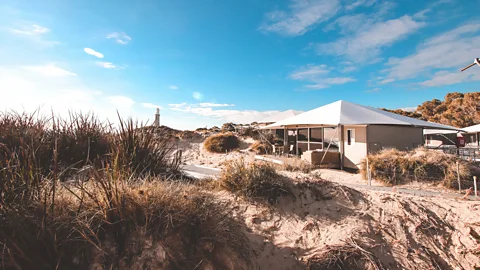
During my stay at the island’s first eco-resort, I enjoyed the simplicity of glamping in a tent surrounded by nature. The resort is designed to minimize environmental impact, with elevated structures that preserve the delicate sand dunes.
Renewable energy sources power the resort, and the island’s commitment to sustainability is evident in its water management and conservation efforts. The local marine sanctuary zones offer world-class snorkeling and diving opportunities, showcasing the island’s rich biodiversity.
As I explored the island on a Segway tour, I marveled at the stunning landscapes and unique flora and fauna. Despite its small size, Rottnest is a Class A reserve, home to a diverse range of protected species.

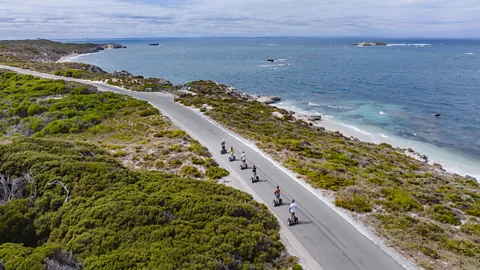
While the island is a paradise today, its history is not without darkness. In 1838, Rottnest was transformed into a prison for Aboriginal people, with thousands incarcerated for crimes they often did not understand. This painful chapter is now being addressed as the island works to honor its Indigenous heritage.
Planning Your Visit
Getting There: Regular ferry services operate from various locations, making it easy to reach the island.
Best Time to Visit: While summer is the peak season, the island remains warm and inviting from September to April, perfect for water activities.
Dining Options: Enjoy delicious meals at local eateries offering a range of cuisines, from casual bites to more upscale dining experiences.
Activities: Rent a bike or snorkeling gear to explore at your own pace, and don’t miss the chance to witness the quokkas in their natural habitat.
As I concluded my visit, I reflected on the island’s complex history and its ongoing journey toward reconciliation. The Wadjemup Aboriginal Burial Ground serves as a poignant reminder of the past, while the Wadjemup Museum and cultural trails work to share the stories of the island’s Indigenous people.
Despite its challenges, Rottnest Island remains a cherished destination, where visitors can connect with nature and experience the magic of this unique place. As I rode my bike along the scenic paths, I felt a sense of peace and belonging, knowing that Rottnest is not just a destination, but a sanctuary for all who visit.

